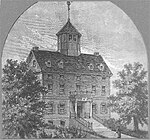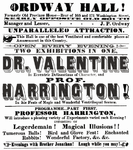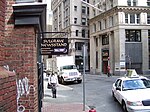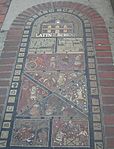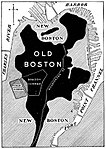Boston Aquarial Gardens
1859 establishments in Massachusetts1860 disestablishments in Massachusetts19th century in BostonAquaria in MassachusettsCultural history of Boston ... and 2 more
Financial District, BostonFormer buildings and structures in Boston

The Boston Aquarial Gardens (1859-1860) was a public aquarium in Boston, Massachusetts, established by James Ambrose Cutting and Henry D Butler. The "conservatories [were] filled with rare marine animals imported and collected exclusively for this establishment; ... a perfect and striking illustration of life beneath the waters." The business was located on Bromfield Street in the Financial District. In 1860 it moved to a new facility nearby, on Central Court, off Washington Street, and re-opened as the Boston Aquarial and Zoological Gardens.
Excerpt from the Wikipedia article Boston Aquarial Gardens (License: CC BY-SA 3.0, Authors, Images).Boston Aquarial Gardens
Province Street, Boston Downtown Boston
Geographical coordinates (GPS) Address Nearby Places Show on map
Geographical coordinates (GPS)
| Latitude | Longitude |
|---|---|
| N 42.357 ° | E -71.06 ° |
Address
45 Province Boston Condos
Province Street 27-47
02108 Boston, Downtown Boston
Massachusetts, United States
Open on Google Maps
